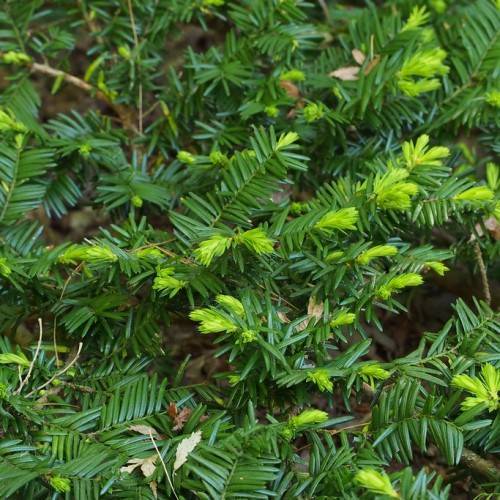
Japanese yew
Taxus cuspidata var. nana
Cycle:
Perennial
Watering:
Average
Hardiness Zone:
4 - 7
Flowers:
Flowers
Sun:
Full sun,part shade
Leaf:
Yes
Growth Rate:
Low
Maintenance:
Low
Poisonous To Humans:
Yes
Poisonous To Pets:
Yes
Drought Tolerant:
Yes
Salt Tolerant:
Yes
Care Level:
Low
watering
Japanese Yew should be watered once every 2 weeks, allowing the soil to dry slightly between waterings. Avoid over-watering, as soggy soil can cause root rot. Depending on the environment and time of year, the amount required will vary. In general, water the plant deeply and slowly so the water can penetrate all the way to the roots. Try to keep the soil consistently damp, but not soggy.
sunlight
The Japanese yew (Taxus cuspidata var. nana) does best in partial sun or dappled shade. It needs around 4 hours of direct sunlight each day. During the summer months, morning sun is preferable as it may be scorched if exposed to the hot afternoon sun. During the winter months, however, the Japanese yew will benefit from the extra sunlight to help keep it healthy. With too little light, the Japanese yew's leaves become yellow and its growth rate slows.
pruning
Japanese yew pruning should generally be done in late winter or early spring. Pruning should be light, removing only moderately large branches of 3⁄4 - 1 inch in diameter. Pruning should be used to control the size and shape of the shrub, not to reduce the overall size of the plant. Be careful to avoid pruning branches close to the ground, as this can lead to over-thinning of the shrub. If thinning is necessary, it should only be done carefully and selectively. Take care to not shear the shrub, as this can ruin its natural shape.
